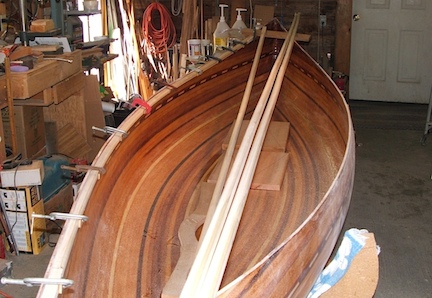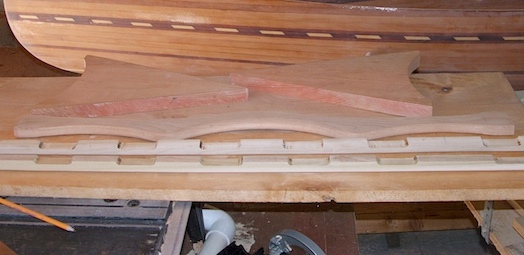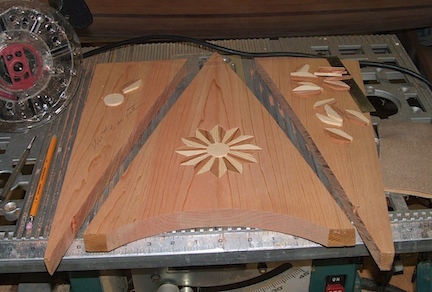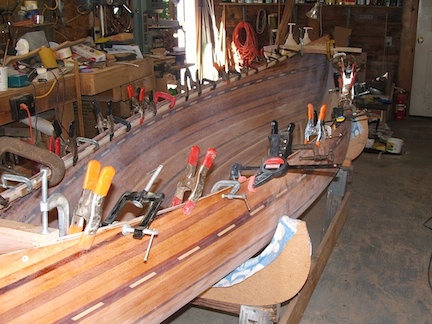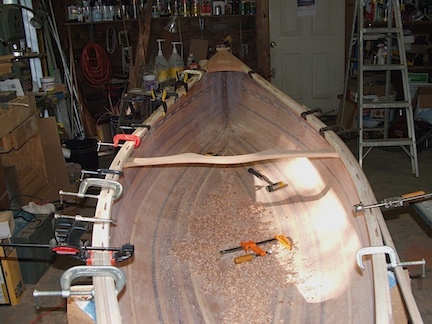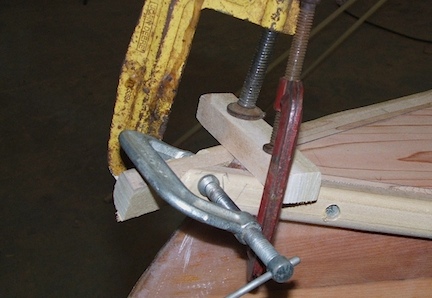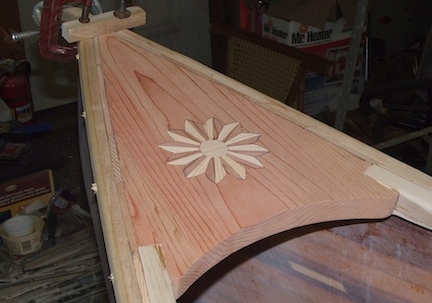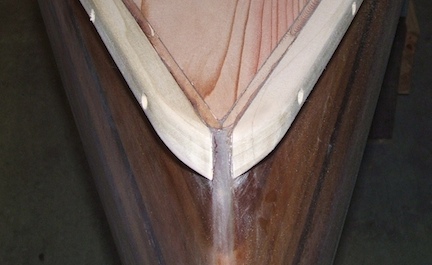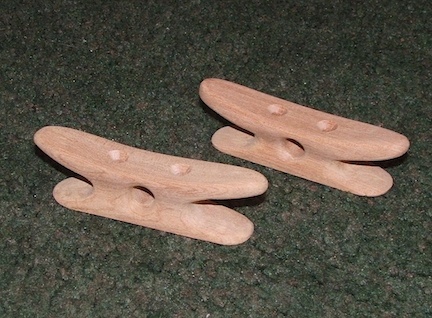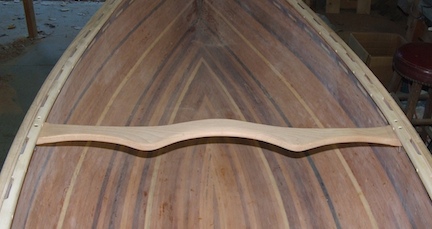Building Sunshine
Gunwales, Decks and Yoke
 Images on this page
Images on this page
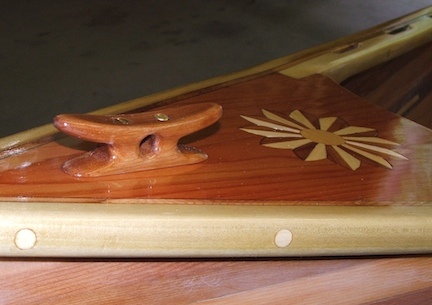 The finished Deck Cleat |
|
Making the Sunshine wood inlays |
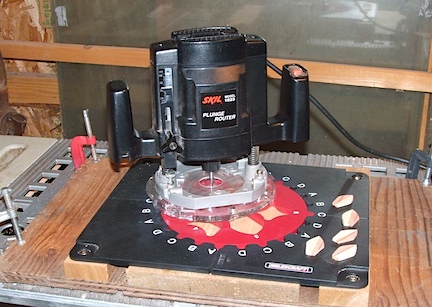 Routing the wood inlays |
The Router I'm using here is a Skill Model 1823 and the inlay template is from the Milescraft Model 1207 Design/Inlay kit. A few of the inlay pieces that make up my sun are on the design guide (black). They are cut with the 11.1mm insert, from 1/8" thick pine/redwood strips which have been glued together. The circular center of the sun is cut from a 1/8" piece of white cedar. The recess for the inlay is routed into the deck using the 17mm insert. The inlay pieces are fitted and glued into the recess. When the glue is dry everything is sanded to make a smooth finish. |
While routing the recesses in the deck material I found that I had to pass over the recess several times to clear away the wood. I decided to use my Dremel tool with a 1/8" bit and the router attachment. This one has a clear acrylic base so I was able to see into the recess and the wood I was removing. The Dremel, with the router attachment Model 335-01, is smaller and lighter than the large router. The Dremel arrangement is great for light work. |
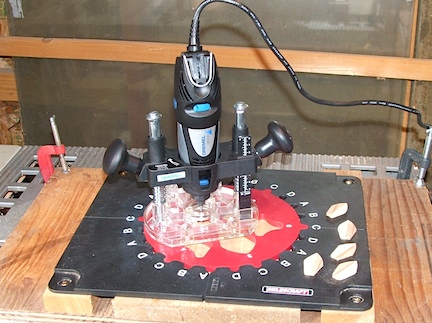 The Dremel router |
HTML validated
-
Lets iCab
![]() smile
smile

